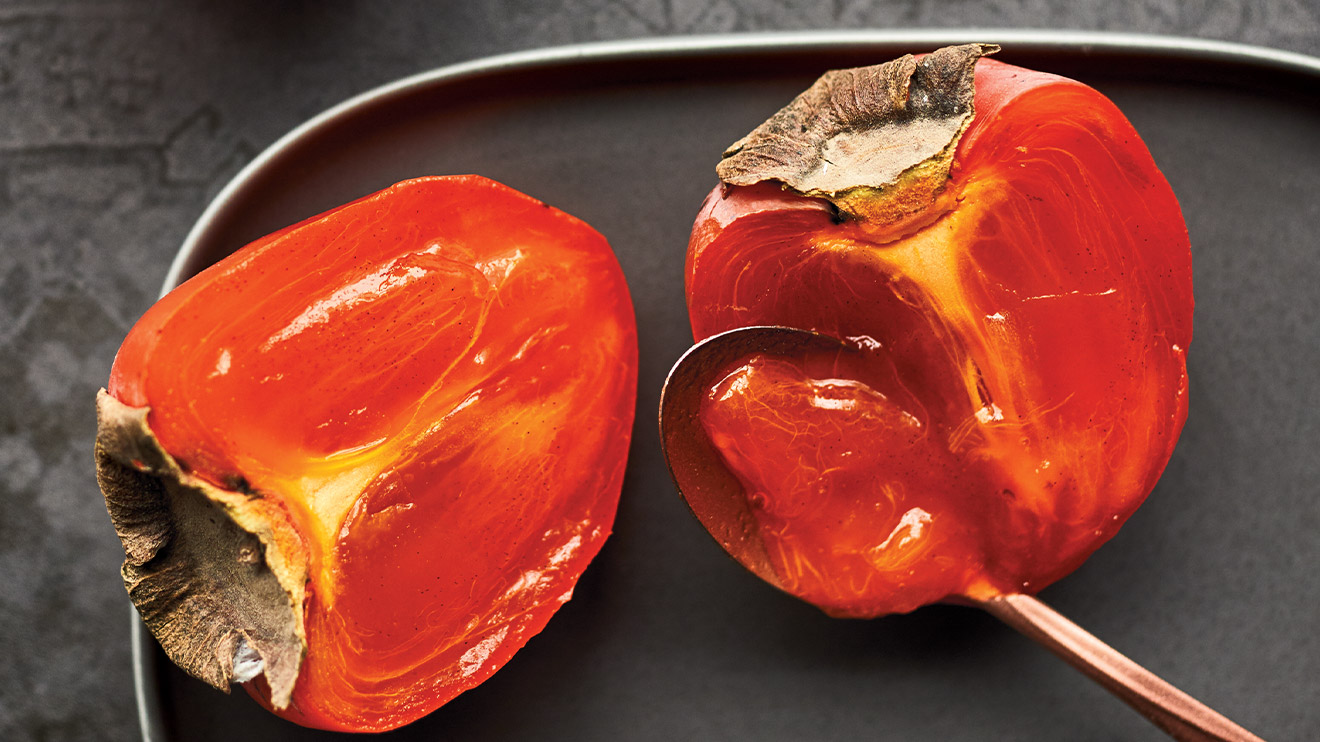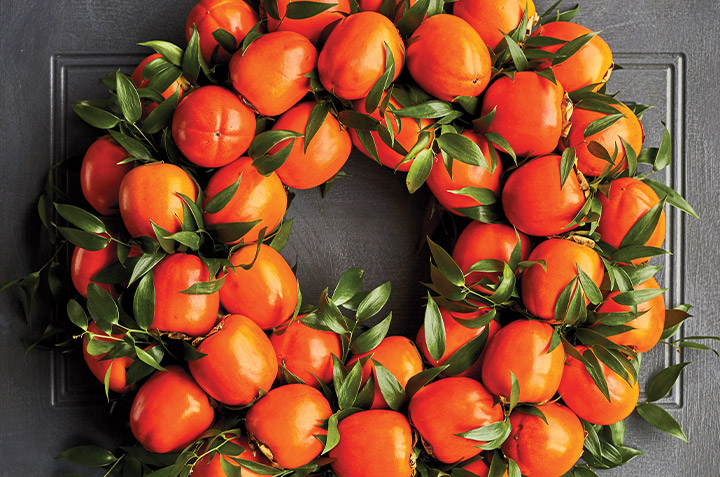1. Seeing stars
Persimmon grows primarily in Asia and California, on trees than can reach 30 feet tall. There are numerous varieties (including Japanese persimmon, a.k.a. kaki). Israel grows Sharon fruit; Spain produces Rojo Brillante. They can be found in certain grocery stores in fall and most of winter. Look for a sticker on the fruit that denotes its variety.
2. The ripe time
A variety like the heart-shaped Hachiya is best used to make jam, because of its bitter and astringent taste. To eat it raw, you must let the fruit ripen until the skin is almost bursting. Fuyu are delicious when still firm and straight off the tree. Sugar freckles or dark spots on the skin mean the fruit is sweet.

3. Sweet side
Many people eat ripe persimmons with a spoon, but the soft texture and sweet taste also make the fruit perfect for jams, jellies and compotes. Persimmons can be easily added to desserts like sorbet. They pair well with chocolate as well as holiday spices. In the United States, the fruit is used to make a dessert similar to English Christmas pudding. It’s also delicious with crumbles and Graham cracker pie crusts.
4. Like a rolling stone
Treat non-astringent persimmons like stone fruits or pears: Chop them into salads, grill them on the barbecue or dice them into salsa. They can also replace the fruit in our beef and mango salad or marsala sabayon. For gatherings, serve thin slices of persimmons stacked with sharp cheese and charcuterie.
5. Hang out to dry
Slivers of dried persimmons make a festive snack. And in Asia, Hachiya persimmons dried whole are a genuine delicacy. The chewy treat, called hoshigaki in Japan, is made by hanging the fruit to dry in the sun. It is gently massaged by hand, causing fructose to crystallize on the skin so that it looks sugar-sprinkled.


